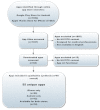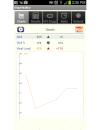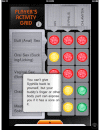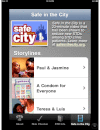Mobile phone applications for the care and prevention of HIV and other sexually transmitted diseases: a review
- PMID: 23291245
- PMCID: PMC3636069
- DOI: 10.2196/jmir.2301
Mobile phone applications for the care and prevention of HIV and other sexually transmitted diseases: a review
Abstract
Background: Mobile phone applications (apps) provide a new platform for delivering tailored human immunodeficiency virus (HIV) and sexually transmitted disease (STD) prevention and care.
Objective: To identify and evaluate currently available mobile phone apps related to the prevention and care of HIV and other STDs.
Methods: We searched the Apple iTunes and Android Google Play stores for HIV/STD-related apps, excluding apps that exclusively targeted industry, providers, and researchers. Each eligible app was downloaded, tested, and assessed for user ratings and functionality as well as 6 broad content areas of HIV prevention and care: HIV/STD disease knowledge, risk reduction/safer sex, condom promotion, HIV/STD testing information, resources for HIV-positive persons, and focus on key populations.
Results: Search queries up to May 2012 identified 1937 apps. Of these, 55 unique apps met the inclusion criteria (12 for Android, 29 for iPhone, and 14 for both platforms). Among these apps, 71% provided disease information about HIV/STDs, 36% provided HIV/STD testing information or resources, 29% included information about condom use or assistance locating condoms, and 24% promoted safer sex. Only 6 apps (11%) covered all 4 of these prevention areas. Eight apps (15%) provided tools or resources specifically for HIV/STD positive persons. Ten apps included information for a range of sexual orientations, 9 apps appeared to be designed for racially/ethnically diverse audiences, and 15 apps featured interactive components. Apps were infrequently downloaded (median 100-500 downloads) and not highly rated (average customer rating 3.7 out of 5 stars).
Conclusions: Most available HIV/STD apps have failed to attract user attention and positive reviews. Public health practitioners should work with app developers to incorporate elements of evidence-based interventions for risk reduction and improve app inclusiveness and interactivity.
Conflict of interest statement
Conflicts of Interest: None declared.
Figures







References
-
- Mukund Bahadur KC, Murray PJ. Cell phone short messaging service (SMS) for HIV/AIDS in South Africa: a literature review. Stud Health Technol Inform. 2010;160(Pt 1):530–4. - PubMed
-
- Ybarra ML, Bull SS. Current trends in Internet- and cell phone-based HIV prevention and intervention programs. Curr HIV/AIDS Rep. 2007 Dec;4(4):201–7. - PubMed
Publication types
MeSH terms
Grants and funding
LinkOut - more resources
Full Text Sources
Other Literature Sources
Medical
Research Materials
Miscellaneous

